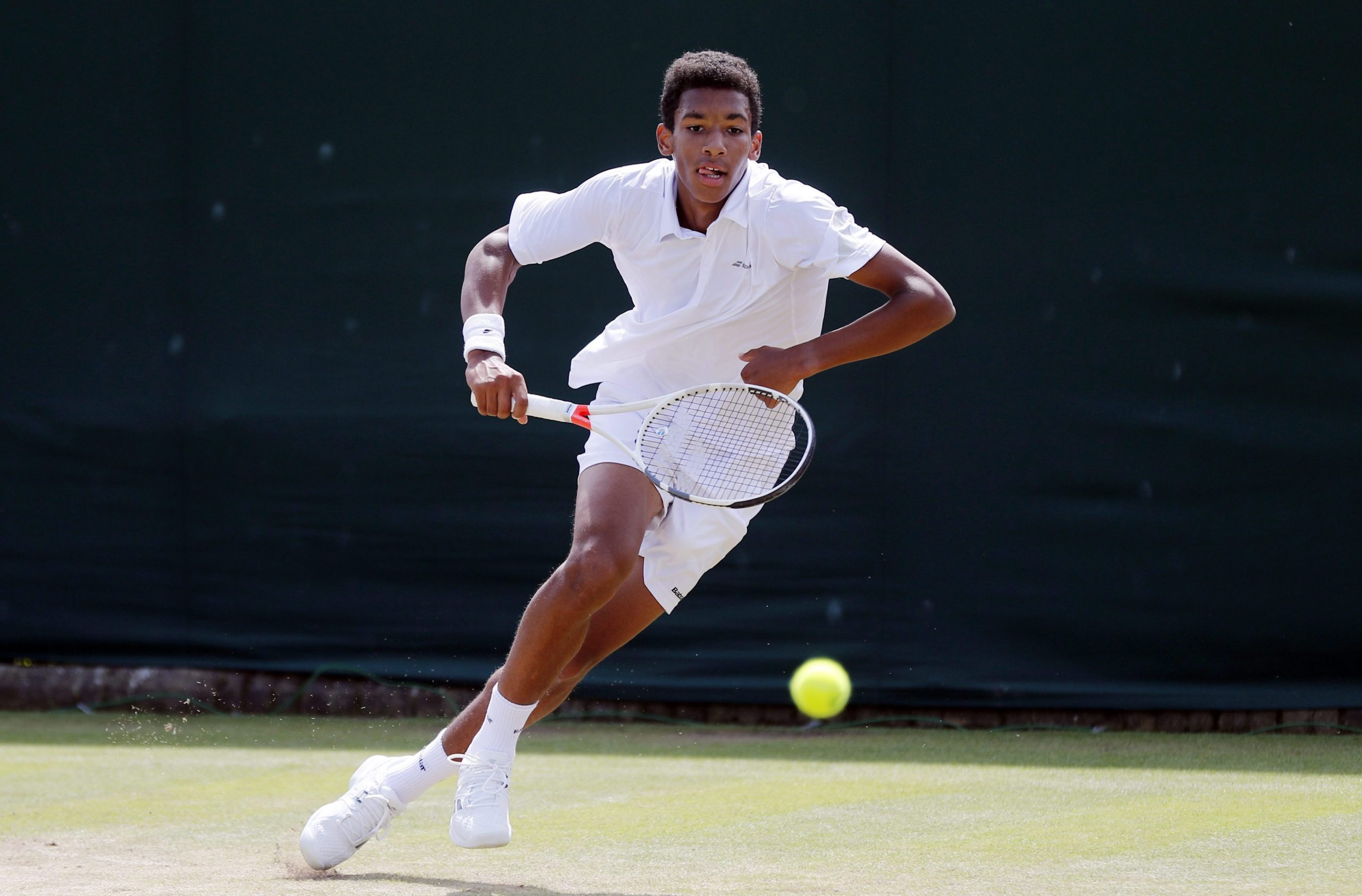TORONTO—While Denis Shapovalov emerges as Canada’s next tennis star, his doubles partner Félix Auger-Aliassime is also steadily making a name for himself.
The likes of John McEnroe and ESPN analyst Brad Gilbert are among the prominent members of the tennis world to take notice of the 15-year-old from Montreal. Gilbert frequently chimes in on Auger-Aliassime’s potential.
And during the broadcast of the Wimbledon men’s final between Andy Murray and Raonic, McEnroe lamented how Canada’s feeder system—led by Auger-Aliassime—had bypassed that of the United States.
“It’s interesting if such legends can see what you’re doing and keep an eye on you,” Auger-Aliassime said in an interview prior to his and Shapovalov’s first-round match on Tuesday evening (which they lost to Bernard Tomic and Viktor Troiki 6–4, 6–3). “It’s great to see that.”
That such luminaries are among those who see a potential Slam winner in a Grade 10 student doesn’t faze Auger-Aliassime. He insists the expectations of others don’t create any extra anxiety or stress.
“I put pressure on myself because I want to do good so I don’t really feel a lot of pressure from anyone else,” he said.
Auger-Aliassime burst onto the tennis scene last year, when he became the first player born in the 21st century to earn an ATP ranking, earning the No. 749 spot at a Challenger event in Granby, Que., last summer. Quickly, he found himself in the spotlight. But last year at the Rogers Cup Tennis Canada kept its young phenom on the sidelines, granting wild cards to older, more experienced and less hyped players.
This year, his game continued to progress, highlighted by an appearance in the French Open junior boys’ final. Though he would fall in that match in a tough three-set loss, his performance was just one reason he was granted a qualifying wild card to the Rogers Cup, his first foray into an ATP 1000 event.
And though he lost on Saturday to James Duckworth, a 24-year-old ranked in the top 200 in the world, and followed that up with a doubles loss Tuesday to close out his tournament, Auger-Aliassime says this year’s experience has been exponentially better than just being on the periphery of the tournament in 2015.
“I feel like this year’s really the actual first time I’m into it,” Auger-Aliassime said. “I’m with the players in the lounge, in the locker room, so I think it’s really different this year. And being able to play in front of the home crowd was great.”
Louis Borfiga, the man at the helm of Tennis Canada’s player development, works closely with Auger-Aliassime’s team when devising his schedule. He said the slow, deliberate growth—especially as it relates to these wild-card berths—is intentional.
“We are thinking long-term with Felix, not short-term, and sometimes a qualifying wild card is better for a young player than a main draw,” Borfiga said.
Borfiga also admitted that they are taking steps to attempt to control the hype surrounding Auger-Aliassime, who is bombarded with media requests, especially from his home province of Quebec.
“We don’t want too much exposure with Felix,” Borfiga said. “He is still young, and when you consider what he could accomplish in the future, he hasn’t really done anything yet.”
Auger-Aliassime’s coach Guillaume Marx has worked with Borfiga for 10 years within Tennis Canada and even longer than that going back to their days with the national tennis federation in France. A few years ago, Marx coached Canadian Filip Peliwo to two junior grand slam titles. Before that, one of the first players he worked with in Canada was a teenaged Milos Raonic. Marx says Auger-Aliassime, the youngest player among the top 30 of the junior rankings, is ahead of Raonic at the same point in their development.
“He is more mature at that age, physically and a little bit mentally as well,” Marx said.
That maturity is why Justin Gimelstob, a Tennis Channel analyst who coached John Isner until this past April, believes all the hype around Auger-Aliassime is justified.
“You don’t see limitations physically, you don’t see limitations mentally, and you don’t see limitations technically,” Gimelstob said. “You see in him nothing but the ability to improve.”
Gimelstob saw plenty of Auger-Aliassime at this year’s French Open and while the on-court tools were obvious then and now, what really caught his eye was how a teenager handled the disappointment of coming painfully close to winning a junior Grand Slam.
“He had a championship point,” Gimelstob said. “When you see a kid inches away from a major career accomplishment, it just resonated with me that he was able to process what was going on in a way that was very mature. You could see how much he cared, but you could also see that he knew there were bigger things to come.
“I was incredibly impressed.”

